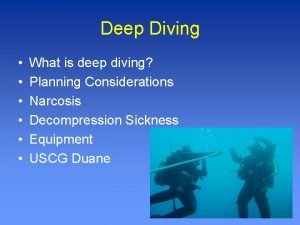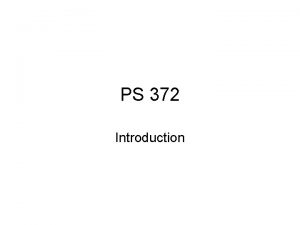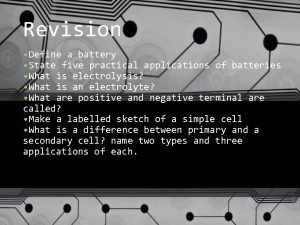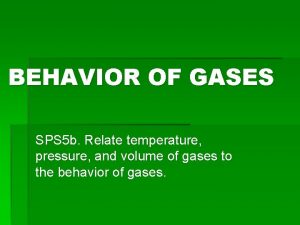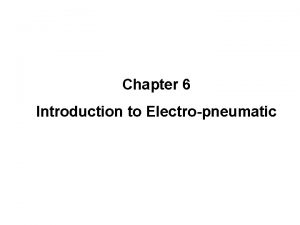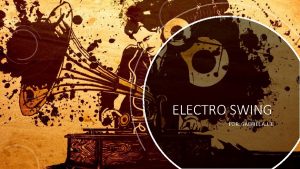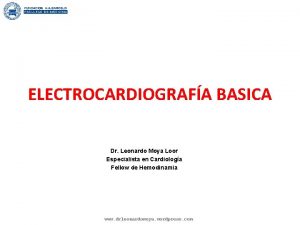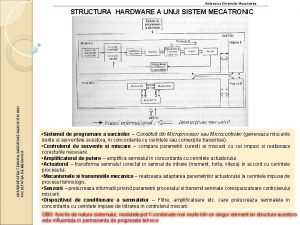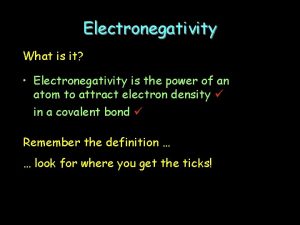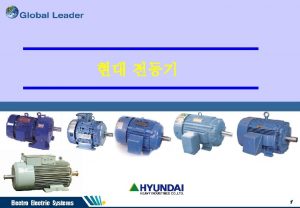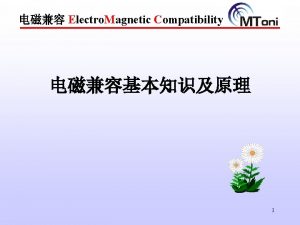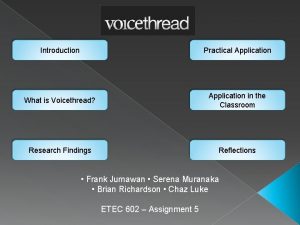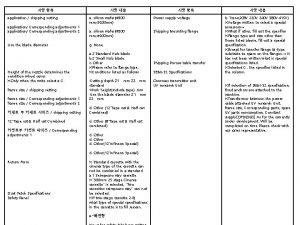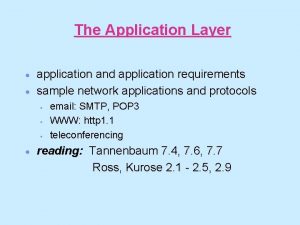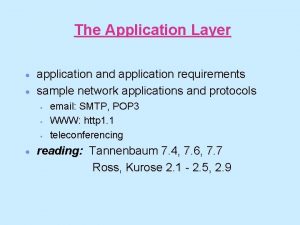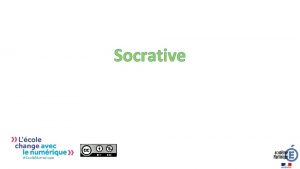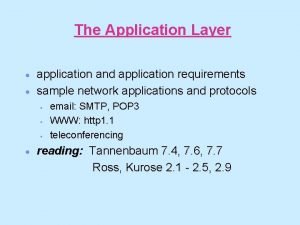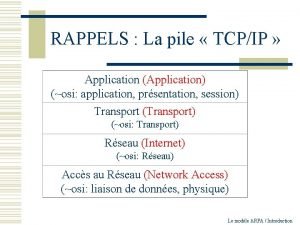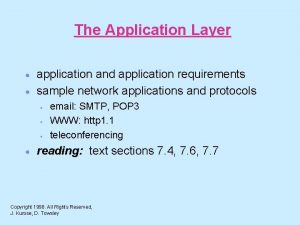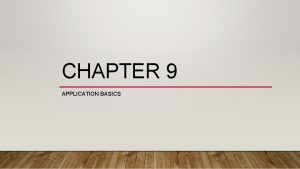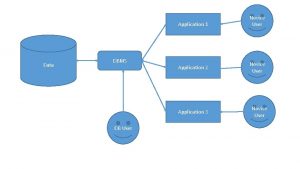Practical Application of Electro Narcosis EN in the



















- Slides: 19

* Practical Application of Electro. Narcosis (EN) in the Field Michael L. Mc. Lean Confederated Tribes of the Umatilla Indian Reservation

Application • Use of drug anesthetics (eg. MS 222) not feasible at traps due to withdrawal period issues Ø Harvest above weir • Begin investigating alternative methods for sedating fish rather than handling fish “hot”

Application • Boss sees EN in use in Washington on steelhead and says we will try it on spring Chinook • I was skeptical at first • Surprised by how cheap and easy to build Ø Help from Joe Bumgarner and Doug Maxey (WDFW) using at Lyons Ferry Complex • Surprised by its effectiveness on fish

Electro-Narcosis vs. Electro-Anesthesia • Electro-narcosis (EN) = low voltage (≤ 60 V) DC equipment which results in a temporary sedation with muscle relaxation occurring only while within the in-water electric field with near immediate (< 5 seconds) recovery from the effect • Electro-anesthesia (EA) = higher voltage (>100 V) AC or DC equipment which results in persistent quiescence or anesthesia lasting 3 to 5 minutes

Electro-Narcosis relies on two electrodes which deliver current into the water to stun the fish. The current runs from the anode to the cathode, creating a high-voltage potential. When a fish encounters a large enough potential gradient, it becomes affected by the electricity. Profound stupor or unconsciousness is produced by passing this electric current through the brain.

Electro-Narcosis Reactions to the DC field can be broadly categorized into five basic phases. Alignment - With initial electrical introduction the fish align themselves with the direction of the electrical current.

Electro-Narcosis Reactions to the DC field can be broadly categorized into five basic phases. Galvanotaxis - Once parallel with the current the fish start to swim towards the anode.

Electro-Narcosis Reactions to the DC field can be broadly categorized into five basic phases. Galvanonarcosis - When fish get close enough to the anode to experience a sufficient voltage gradient their ability to swim is impaired. In this state their muscles are relaxed.

Electro-Narcosis Reactions to the DC field can be broadly categorized into five basic phases. Pseudo-forced swimming – as the fish gets even closer to the anode the fish begins again to swim toward the anode. This swimming is caused by direct excitement of the fish muscles by the electric field and is not under the control of the CNS.

Electro-Narcosis Reactions to the DC field can be broadly categorized into five basic phases. Tetanus – At high dc voltages the muscles go from a relaxed state into spasm. This can result in impaired ability to breathe and possible skeletal damage. Unless held under conditions of tetanus, when the electricity is switched off, or the fish are removed from the electric field, they recover instantly.

Results • Handling time reduced in the trap • You don’t feel like you just finished a 10 round boxing match when finished with the fish • Seems easier on the fish as well • No one likes to get shocked ü As your hands move towards the electrodes you do feel a tingling sensation ü There is no shock at the voltage and amperage we used

Results • • Viability comparison data from LGH EN used on GR and LG at spawning not at trap EN used on CC at the trap not spawning EN not used at all on LR or IM stocks Stock 2006 -11 %Viability 2012 %Viability Grande Ronde 81 -93 mean 88 92 Lookingglass 77 -98 mean 89 94 Catherine* 85 -92 mean 92 87 Lostine 85 -96 mean 91 90 Imnaha 75 -93 mean 88 80

Materials • Simple plastic livestock watering trough (75 gal) Ø ~4’L x 2 W’ x 10”water depth (~50 gal working ) Ø Buy at any farm supply store (~$90) Ø Drain with plug (~$20).

Materials • Power supply, could only find 4 different manufacturers • We use 1 -60 VDC 0 -3. 3 Amp power supply Ø Protek (discontinued) (~$260) Ø BK Precision (~$270) Ø Instek (~$550) Ø Kenwood (~$2, 500)

Materials • 15 to 25 ft extension cord ($7 -$15) Ø Cut off male end attach to power supply. Ø Use female end to attach to trough.

Materials • Aluminum plate. Ø 16”x 16” 0. 125 thickness (~$40). Ø Black plastic mesh screen ½ inch. Ø Eager Inc has 50’ roll for $166 or find scraps. Ø 4 Nuts and bolts to attach.

Materials • For Lookingglass Hatchery Ø Aluminum plate larger (3’x 3’) 0. 125 thickness (~$104). Ø Wire for connection. Ø Rubber slats for support and connection Ø Nuts and bolts to attach.

Video • In the video you will see Ø The phases the fish go through Ø Normally machine runs all the time, turning on and off in the video for demonstration Ø Materials used to build the device Ø People scared of electricity

Acknowledgements • • A big thanks to the crew at the Lookingglass Hatchery. Joe Bumgarner, WDFW Doug Maxey, WDFW My Crew ü Laurie Hewitt ü Ryan Seeger
 Asthma pathophysiology
Asthma pathophysiology Whats the bends
Whats the bends What is the use of polynomials in real life
What is the use of polynomials in real life Application of mathematics in practical situations
Application of mathematics in practical situations Practical application of stokes theorem
Practical application of stokes theorem Practical application of solar energy
Practical application of solar energy Practical application
Practical application Practical application of calculus
Practical application of calculus State five practical application of batteries
State five practical application of batteries Practical applications of biotechnology
Practical applications of biotechnology Applications of boyle's law in real life
Applications of boyle's law in real life Electro pneumatic components
Electro pneumatic components Electro swing history
Electro swing history Derivaciones unipolares y bipolares
Derivaciones unipolares y bipolares Sisteme mecatronice auxiliar
Sisteme mecatronice auxiliar The electromechanical period
The electromechanical period Music house electro
Music house electro Electro kinetic road ramp
Electro kinetic road ramp Thinking (electro)negatively electronegativity scale
Thinking (electro)negatively electronegativity scale Electro-works ltd
Electro-works ltd

